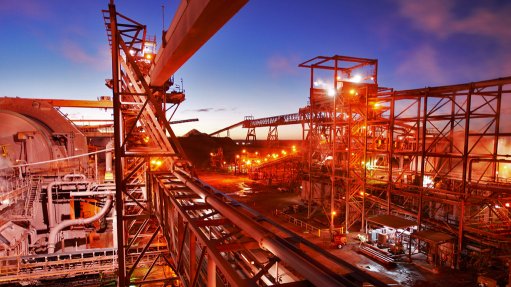
The Olympic Dam copper and uranium operation, in South Australia.
PERTH (miningweekly.com) – Diversified miner BHP Billiton on Friday said that the company would look at cost-cutting efficiencies at its Olympic Dam copper and uranium operation, in South Australia, before considering an expansion.
“Once we are able to run our existing operation at full capacity, we then – and only then – earn the right to grow,” asset president Darryl Cuzzubbo said.
Last month, Prime Minister Tony Abbott rekindled talk of an expansion of the Olympic Dam in comments made at a Coalition meeting. Quoted in local media, he reportedly said that “a substantial expansion” of BHP Billiton’s project could be expected in the months and years ahead.
Speaking at the fortieth annual Essington Lewis Memorial Lecture, Cuzzubbo said that BHP had identified its top ten cost and value drivers for the Olympic Dam operation, benchmarking itself against the best operations in the world.
He noted that any expansion of the Olympic Dam asset would be closely linked to efficiency, at is was often the operating cost of an expanded plant that drove the return on capital.
“For us, the financial model of any planned expansion is naturally going to be based on our current operating costs, which only reinforces the criticality of getting this right.”
BHP in 2012 shelved a $20-billion expansion plan at Olympic Dam, which would have seen the miner dig an openpit mine to quadruple output. At the time, the company said that it would investigate cheaper alternatives to expand the mine.
Cuzzubbo said on Friday that BHP was continuing to research all options for expansion, and had initially focused on a divergent process where all options were evaluated to ensure that no stone was left unturned.
The financial analysis of this research was now being applied to the project, to determine the best possible future options.
“It is important to not only run Olympic Dam efficiently, but run it the right way. In order to do this, we have to take a step back to understand where our focus will deliver the best results,” Cuzzubbo said.
“At the moment, the mine is our bottleneck, which means that we are starving our high fixed-cost surface processing infrastructure of copper. By running different scenarios, we see that it makes more economic sense for the refinery, which is the back-end of our processing infrastructure, to be our bottleneck.”
Cuzzubbo said that this would require a significant investment in opening the underground mine so that there was no longer a constraint, and to de-bottleneck the surface to allow for a continuous feed of the refinery.
“Our immediate challenge is how we self-fund the required investment by being prudent and creative with our capital, and engaging our workforce to not only reduce costs but also accelerate the initiatives that will reduce our costs.”